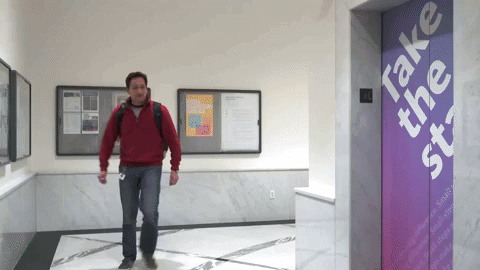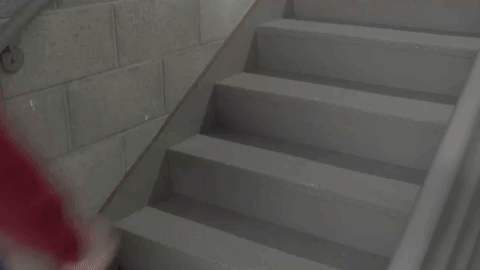Have you ever failed at keeping a New Year's resolution? You're joining a sizeable crowd. It’s challenging to make a change in our behavior — but Eric Spangenberg is here to help.
Professor Spangenberg, the dean of UC Irvine’s Paul Merage School of Business, is an expert on what is known as the question-behavior effect.
It’s a cognitive phenomenon that has been studied in the fields of business and political science, among others. Spangenberg’s research shows that we are more likely to engage in an activity if we first question whether we will do it.
“Ask yourself, ‘will you?’ Will you exercise? Will you use your health club?” says Spangenberg.
Turning our resolutions into questions can be a surprisingly effective technique for influencing behavior.

It's easy to disappoint ourselves with our behavior.
The most popular theory for its success is that it triggers a sense of cognitive dissonance. That’s the feeling of discomfort we get when our thoughts don’t match our actions.
When we experience dissonance, we tend to resolve it in one of a few basic ways — which is easy to see when it comes to resolutions.
Say it’s March and you realize that you’ve already stopped going to the gym, despite the promises you made to yourself in January. Maybe you tell yourself it doesn’t matter (“I have other things to do,”) or find reassurance by performing a compensatory behavior (“I’m eating more salad!”). These are two very common responses to cognitive dissonance, and as anyone who has struggled to keep a resolution knows, it’s easy to create these types of “outs.”
But, says Spangenberg, there is another option: “The alternative we’ve seen that the question-behavior effect elicits is that we actually change our behavior to match our cognitions.”

Set a reminder: “Will I take the stairs?”
In other words, by posing a question — “Will I go to the gym today?” or, “Will I take the stairs?” — and creating that uncomfortable feeling of cognitive dissonance, we put ourselves in the position to successfully resolve it by actually doing the behavior.
It’s not just a reminder to do something — it’s asking ourselves, or others, to make a prediction about whether or not we will actually do it.
How do we best trigger this effect?

Boom.
Spangenberg has three recommendations.
Keep the question simple.
Studies show the question-behavior effect works best when the question can be answered with a simple yes or no. So, think of your resolution as a question you can affirmatively answer each day. Don’t think, “I will get in better shape this year,” but, “Will I go to the gym today?” or “Will I do yoga for 20 minutes?” and stick to a concrete action.
Make sure the resolution is achievable in your daily life.
Your resolution should be novel — the question-behavior technique is less effective if applied to something that you’ve already tried and failed to do — but make sure it’s not too far outside your normal routine. If you have a swim club membership you don’t use as much as you would like, ask yourself: “Will I go swimming at the pool today?” You may want to learn to play guitar like a maestro, but if you’ve never played before, it might be a little challenging to do so as a resolution. Keep it realistic.
Make it public.
With the proliferation of social media, making things public about your life may seem like a given. But it’s especially important to be intentional and public about your resolutions. “It’s pretty easy to let myself down, but I don’t want to let down my family or my friends, or my followers on Twitter,” Spangenberg says. Making things public “actually puts me in a position where I’m held accountable in some way.”
So this year, as you look at your resolutions, try something a little bit different, and ask yourself, “Will I?” You may find your resolutions that much easier to fulfill.

